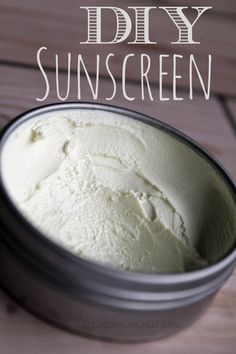May is Melanoma/Skin Cancer Detection and Prevention Month
We are half way through the month already and I am wondering if you knew about it. What does this mean to you? Does it really bring awareness to you and the people around you? I am really concerned about the damages that the sun can have on our skin but I am also concerned about the effects of wearing commercial sunscreens can have on people.
UV light causes skin cancer and prematurely ages the skin, and so it’s very important to protect our skin with sunscreen or clothing. We don’t want to block sunshine completely – about 20 minutes each day is good for us – it boosts our vitamin D and improves our mood. Beyond 20 minutes, however, and our immune system suffers. We either need to spend the rest of the day inside or protect our skin with sunscreen or clothing.
The reason for my concern is that the majority of sunscreen products on the market contain harmful chemicals that might be cancerous. Our skin is our largest organ. Anything that comes in contact with the skin is absorbed into our body and is free to circulate into our bloodstream. There are 17 individual sunscreen ingredients that are FDA approved: 15 of these are clear chemicals that absorb UV light and two are made of minerals that reflect UV light. Of these 15, nine are known endocrine disruptors (Endocrine disruptors are chemicals that, at certain doses, can interfere with the endocrine (or hormone) system in mammals. These disruptions can cause cancerous tumors, birth defects, and other developmental disorders. Any system in the body controlled by hormones can be derailed by hormone disruptors.). Chemical sunscreens don’t sit on the surface of the skin – they soak into it and quickly find their way into the bloodstream. They scatter all over the body without being detoxified by the liver and can be detected in blood, urine, and breast milk for up to two days after a single application. That would be just fine if they were uniformly safe – but they’re not.
This is not the case with zinc oxide and titanium dioxide, the two mineral, or physical, sunscreens. These two work very differently – they sit on the surface of the skin and physically block UV light. Zinc oxide and titanium dioxide are rocks that are ground down to a fine consistency. They do a great job at blocking both UVA and UVB light. Zinc is less whitening on the skin and blocks nearly all dangerous UV light. Inexpensive versions of these sunscreens are gooey and while you might put them on your kid’s skin, most people don’t like them. But newer zinc oxide sunscreens contain particles so small that they are transparent. These sunscreens are called micronized and do a great job at protecting against UV radiation. Be careful when buying these kinds because the micronized particles are small enough to enter your bloodstream and can be just as harmful as the chemical mentioned above.
As mentioned, nine of the 15 chemical sunscreens are considered endocrine disruptors. Those are chemicals that interfere with the normal function of hormones. The hormones most commonly disturbed are estrogen, progesterone, testosterone, and thyroid. Endocrine disruptors, like some ingredients in chemical sunscreens, can cause abnormal development of fetuses and growing children. They cause early puberty and premature breast development in girls, and small and undescended testicles in boys. They cause low sperm counts and infertility. Endocrine disruptors that act like estrogen can contribute to the development of breast and ovarian cancers in women and other endocrine disruptors may increase the chance of prostate cancer in men.
Luckily there is some alternative for us. Nature is providing us with natural ingredients that can protect our skin naturally. Here’s a list of natural oils that can protect our skin for the damaging UV rays.
Carrot seed oil –> SPF 38-40
Raspberry seed oil –> 28-50
Wheat germ oil –> SPF 20
Avocado oil –> SPF 4-15
Coconut oil –> SPF 2-8
Olive oil –> SPF 2-8
Macadamia nut oil –> SPF 6
Almond oil –> SPF 5
Jojoba oil –> SPF 4
Shea butter –> SPF 3-6
With some of these oils you can make your own sunscreen at home. Make sure to look at my “DIY projects – Make your own sunscreens” blog post.
Based on an article by Arthur W. Perry, MD, FACS Dr. Perry is a board certified plastic surgeon, an Adjunct Associate Professor at Columbia University, and a member of the Medical Advisory Board for The Dr. Oz Show.



